#Pope Gelasius
Explore tagged Tumblr posts
Text
my favorite part is that they did that to themselves
everytime i hear allos saying being aroace is sad i think of how there's a whole day made to just suck all of their money up
#pope gelasius i was the person who made saint valentine's day#and so saint valentine's day was originally a religious holiday
4K notes
·
View notes
Text
The first thing I would do with a time machine is beat the shit out of Pope Gelasius the first
#pope gelasius i was the person who made saint valentine's day#aromantic#asexual#aroace#noodles random posts
1 note
·
View note
Text
Leading Candidates The Next Pope: Who Are The Frontrunners to Succeed Pope Francis?
Source
Luis Antonio Tagle (Philippines)

Currently the betting favorite at 3:1 odds, Cardinal Luis Antonio Tagle, 67, is considered a strong contender to continue Pope Francis's progressive agenda.
Tagle, an advocate for inclusion and evangelization, has significant experience leading the Congregation for the Evangelization of Peoples and was a trusted figure in Francis's inner circle.
AN: upon further research he heavily opposes abortion and same sex marriage
Pietro Parolin (Italy)

At 4:1 odds, Cardinal Pietro Parolin, 70, is one of the most experienced Vatican officials. In his role as the Vatican's Secretary of State since 2013, he has played a major part in diplomatic affairs, including sensitive negotiations with China and Middle Eastern governments.
Parolin is seen as a moderate theological candidate, someone who could provide stability while still maintaining some of Francis's reforms. His deep ties to Vatican bureaucracy make him a strong contender for those who favor continuity.
Peter Turkson (Ghana)

Currently at 5:1 odds in betting markets, Cardinal Peter Turkson, 76, is a well-known figure in the Church's social justice circles. As former head of the Dicastery for Promoting Integral Human Development, Turkson has been vocal on issues such as climate change, poverty and economic justice.
Turkson's election would mark a historic moment as the first African pope in centuries. The most recent African pontiff was Pope Gelasius, who served from 492 to 496 AD. Born in Rome to African parents, Gelasius was known for his extensive theological writings and strong advocacy for charity and justice for the poor.
Peter Erdő (Hungary)
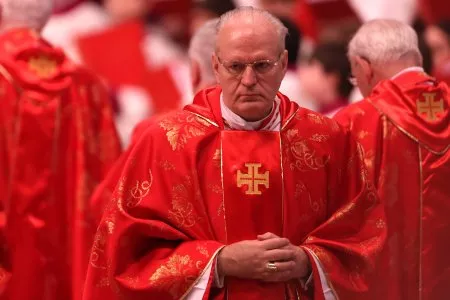
A leading conservative candidate, Cardinal Peter Erdő, 72, is currently at 6:1 odds. A respected canon law scholar, Erdő has been a strong advocate for traditional Catholic teachings and doctrine. He previously served as head of the Council of European Bishops' Conferences and has emphasized theological orthodoxy.
For those seeking a return to the conservatism of John Paul II and Benedict XVI, Erdő would represent a major shift away from Francis's approach.
Angelo Scola (Italy)
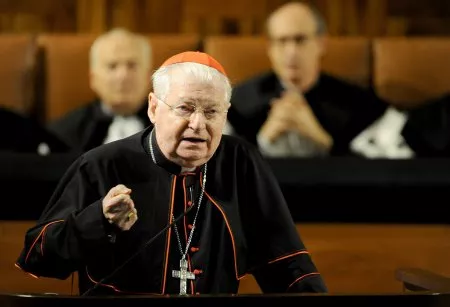
At 8:1, Cardinal Angelo Scola, 82, is a long-standing papal contender. He was among the favorites in the 2013 conclave that ultimately elected Pope Francis. Scola, a former Archbishop of Milan, has deep theological roots and appeals to those who support a more centralized and hierarchical Church.
His traditionalist stance makes him a strong candidate for those looking to pivot away from Francis's reforms, but his age may work against him.
1K notes
·
View notes
Text
𝐋𝐮𝐩𝐞𝐫𝐜𝐚𝐥𝐢𝐚

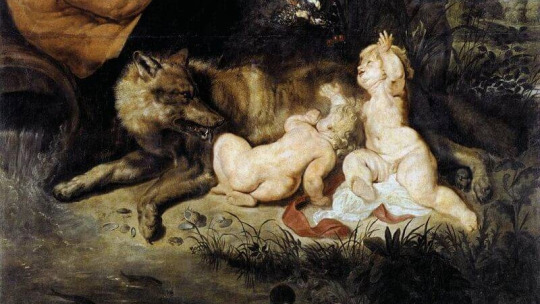


What is Lupercalia?
Celebrated on February 13th - February 15th, Lupercalia was an ancient Roman holiday dedicated to the god Faunus, the wild horned spirit of nature, and the legendary founders of Rome, Romulus and Remus. The festival is believed to have far more ancient origins than its association with these mythical figures, likely stemming from earlier fertility rites and purification ceremonies.
The name of the festival, Lupercalia, is derived from the Latin word lupus (wolf), tying it to the legend of the she-wolf who rescued and nursed Romulus and Remus in the cave known as the Lupercal. This cave, located on Palatine Hill, became the heart of the festival’s rituals, emphasizing the protective and nurturing symbolism of wolves.
At its core, Lupercalia celebrated the themes of fertility, purification, and the harmony of nature. It honored two deities: Faunus, the primordial spirit of wild nature and fertility, and Juno Februata, the aspect of Juno associated with purification and the passions of love. The name "February" itself originates from Februare (to cleanse) and Juno Februata, underscoring the month’s ties to this festival.
The festival began with sacrifices of goats, symbolizing fertility, and dogs, representing purification. These sacrifices were followed by ceremonial rituals performed by Faunus’ priests, known as the Luperci. After consuming the sacrificial meat, the Luperci smeared themselves with the blood of the animals and dressed in strips of goatskin, referred to as "Juno’s cloak." They then ran through the streets of the Palatine Hill, carrying whips made from goatskin called februa.
Women who wished to conceive strategically positioned themselves to be struck by the whips, believing this act would enhance fertility, ensure conception, and guarantee safe childbirth. This ritual also served as a broader purification rite for the community, cleansing it in preparation for the coming New Year, which in the Roman calendar began at the vernal equinox.
The nine days of Lupercalia, from February 13th to the 21st, were believed to be a liminal time when the souls of the dead wandered the earth. Offerings of food and drink were left for them, with the living honoring the spirits as part of the festival's traditions.
Over time, the festival's elements shifted and evolved, blending with other traditions. February 14th, now celebrated as Valentine’s Day, originally marked the first day of Lupercalia, dedicated to Juno Februata and Faunus, when women prayed for fertility and blessings.
Lupercalia continued to be celebrated for centuries until it was officially abolished in 495 AD by Pope Gelasius I, who replaced it with a Christian feast day. Now, in modern times, even though Lupercalia is no longer a widely celebrated festival, it is often associated with modern Valentine’s Day or even a celebration of self-love. Today, it’s all about love, fertility, and connection. You can spend the three days of Lupercalia by offering yourself love and understanding, doing things that nurture your self-appreciation, and spending special time with your loved ones.
⠂⠄⠄⠂⠁⠁⠂⠄⠄⠂⠁⠁⠂⠄⠄⠂⠄⠄⠂⠂⠄⠄⠂⠁⠁⠂⠄⠄⠂⠁⠁
Magic Correspondences:
Colors: red, white, pink
Crystals: rose quartz, milky quartz, selenite, moonstone, ruby, garnet, lepidolite, green aventurine, emerald
Deities: Juno, Lupercus, Faunus, Venus, Aphrodite, Pan, Hera, Dionysus, Eros, Mars, Freyja, Cernunnos (deities associated with love, fertility, and abundance)
Animals: dog, goat, wolf, dove, swan, dolphin, ladybug, lovebirds, horse
Flowers: lavender, roses, snowdrops, hyacinths, tulips, orchids
Herbs: cinnamon, basil, jasmine, vanilla
Fruits: figs, cherries, grapes, bananas, strawberries, pomegranate, raspberries, apples
Symbols: phallus, hearts, wolves, whips, goat
Magick: fertility and abundance spells, self-love magick, sex magick, purification
⠂⠄⠄⠂⠁⠁⠂⠄⠄⠂⠁⠁⠂⠄⠄⠂⠄⠄⠂⠂⠄⠄⠂⠁⠁⠂⠄⠄⠂⠁⠁
Activities to do:
🐺 Take a relaxing long bath, and add some rose essential oil if you like
🐺 Spend time with your dog(s)
🐺 Watch some romance movies
🐺 Treat yourself to things that make you feel good, like lotions, perfume, or new clothes
🐺 Light red, pink, or white candles
🐺 Collect flowers and put them in your altar or room
🐺 Drink goat milk
🐺 Perform love, fertility, and purification spells
🐺 Give flowers to loved ones
🐺 Spend some time in your home, simply being naked because why not?
🐺 Bake heart-shaped cakes
🐺 Support dog shelters with a donation
🐺 Spend time with your lover
🐺 Listen to your favorite music
🐺 Show appreciation for your body
🐺 Take your health medicine
🐺 Decorate your space or altar with heart-shaped objects
🐺 Spend time and meditate in nature
🐺 Eat lots of chocolate
🐺 Practice yoga
🐺 Connect with deities associated with love, fertility, and purification
🐺 Drink some red wine
🐺 Dedicate a day to self-care, doing what feels healthy and good for you
⠂⠄⠄⠂⠁⠁⠂⠄⠄⠂⠁��⠂⠄⠄⠂⠄⠄⠂⠂⠄⠄⠂⠁⠁⠂⠄⠄⠂⠁⠁
Food and Drinks:
Drink red liquids like wine, cranberry or strawberry juice, consume goat dairy, cakes, muffins, chocolate, honey, cherries, champagne, grapes, hazelnuts, cinnamon rolls, cupcakes, any food with meat, apple pie, strawberries.
⠂⠄⠄⠂⠁⠁⠂⠄⠄⠂⠁⠁⠂⠄⠄⠂⠄⠄⠂⠂⠄⠄⠂⠁⠁⠂⠄⠄⠂⠁⠁
sources: Wicca: A Modern Guide To Witchcraft & Magick; Encyclopedia of Witchcraft: The Complete A-Z for the Entire Magical World by Judika Illes
#paganism#hellenic polytheism#deity work#hellenic pagan#roman mythology#lupercalia#valentine's day#witchy#witch#witches#witchcraft#eclectic pagan#hellenic paganism#pagans#pagan#pagan witch#paganblr#imbolc#candlemas#magic#magick#witchblr#deity worship#witch community#witchcore#tarot#wicca#wiccan#hellenism#hellenic
518 notes
·
View notes
Text
Contra Sedevacantism
There are many reasons by which the See of Peter’s supposed vacancy is proven false. However, there is one that stands out above the rest. The sedevacantist theses is impossible because it implies that all of the bishops of the world would have erred in their recognition of the legitimacy of John XXIII, Paul VI and the Second Vatican Council. The unanimous testimony* of the episcopate was that the Roman Pontiffs and the Council were entirely legitimate. The Church teaches and has always taught that it is impossible for the entire hierarchy of the Church to err by virtue of the promises in Matthew 16. Here we shall explore the latter:
*It must be noted that when discussing unanimity in any respect the Church uses this term to refer not to an absolute consensus but a moral consensus. A singluar rogue bishop here or there does not falsify this term. We see this, notably, when we discuss the consensus of the Fathers and with regard to the Universal and Ordinary Magisterium.
In the papal bull, Auctorem Fidei, Pope Pius VI condemns (with different censures) various propositions that were put forward by the Gallican robber synod of Pistoia. Among which is the proposition that there can spread a general obscuring of the more important truths condemned as heretical:

This proposition would logically follow and become true if the entire hierarchy of the Church, save for a handful of dubiously ordained bishops, defected from the true faith.
Pope Gregory XVI, while echoing the historic papal claims, notes the indefectibility of the Church at large in his encyclical Mirari Vos:
To use the words of the fathers of Trent, it is certain that the Church “was instructed by Jesus Christ and His Apostles and that all truth was daily taught it by the inspiration of the Holy Spirit.” Therefore, it is obviously absurd and injurious to propose a certain “restoration and regeneration” for her as though necessary for her safety and growth, as if she could be considered subject to defect or obscuration or other misfortune. Indeed these authors of novelties consider that a “foundation may be laid of a new human institution,” and what Cyprian detested may come to pass, that what was a divine thing “may become a human church.” Let those who devise such plans be aware that, according to the testimony of St. Leo, “the right to grant dispensation from the canons is given” only to the Roman Pontiff. He alone, and no private person, can decide anything “about the rules of the Church Fathers.” As St. Gelasius writes: “It is the papal responsibility to keep the canonical decrees in their place and to evaluate the precepts of previous popes so that when the times demand relaxation in order to rejuvenate the churches, they may be adjusted after diligent consideration.”
Perhaps the most straightforward and damning example is found in Pope Leo XII’s apostolic exhortation, Pastoris Aeterni:
How indeed can the Church be a mother to you, if you do not have as fathers the pastors of the Church, that is, the Bishops? And how could you boast of the name of Catholics if, separated from the center of Catholicity, that is, precisely from this Holy Apostolic See and from the Supreme Pontiff, in whom God fixed the origin of unity, you break the Catholic unity? The Catholic Church is one, it is not torn or divided; therefore your "Little Church" can have no connection with the Catholic. For your so-called teachers, or rather your deceivers, there remains not one of the Gallican Bishops, who defends you and takes your side; indeed it is known that all the Bishops of the Catholic world, to whom they appealed, and for whom they wrote and printed their schismatic protests, approve the aforementioned conventions and the subsequent acts of Pius VII, to which the whole Catholic Church is favorable. What then? Are they not waging open war against the Catholic Church, and declaring that they have already conquered her, who dare to accuse her of simulation, or ignorance, or error? And yet the authors of the rebellion are so foolish as to dare to make such impudent accusations. They proclaim that the Church, which is against them and maintains communion with this Holy See, must be pointed out as simulating, or deceived, or erring; they furiously inveigh against her as schismatic. As the Donatists claimed of their faction, so they too would claim of their own, namely, that in her alone consists the true Church. Since, on the other hand, their fictitious "Little Church" not only has no distinctive character of the Catholic Church, but on the contrary manifests all the characteristics of the schismatic sect, it remains for them to affirm what would follow as if along an inclined plane, namely, that the Catholic Church has already ceased to exist. And indeed, whoever affirms this, by that very fact demonstrates that he is not in the Catholic Church.
Bl. Pius IX, in attempting to deal with the armenian church, touched on this topic in his encyclical letter, Quartus Supra:
But the neo-schismatics say that it was not a case of doctrine but of discipline, so the name and prerogatives of Catholics cannot be denied to those who object. Our Constitution Reversurus, published on July 12, 1867, answers this objection. We do not doubt that you know well how vain and worthless this evasion is. For the Catholic Church has always regarded as schismatic those who obstinately oppose the lawful prelates of the Church and in particular, the chief shepherd of all. Schismatics avoid carrying out their orders and even deny their very rank.
Now, I know that sedevacantists do not believe that the current prelates are, in fact, lawful. However, there is almost nobody who would argue that those prelates who elected Pope Saint John XXIII, attended the council, drafted the documents, and signed those documents were not lawful. Therefore, to obstinately oppose their teaching and their acceptance of the Roman Pontiffs since the Second Vatican Council is in direct violation of what Bl. Pius IX teaches.
Next I will present various citations from Pope Leo XIII:
Therefore, there can be no legitimate cause for these men, whoever were the first leaders of those concerned today, to be separated from the most holy communion of the Catholic world. Let them not rely on the upright quality of their conduct, not on their fidelity to discipline, not on their zeal in safeguarding teaching and stability in religion. Does not the Apostle say plainly that without charity all this profiteth nothing? (a) There is not a single bishop who considers them to be or who governs them as his flock. From this the evidence is plain: they may conclude with certainty that they are fugitives from the flock of Christ.
Eximia Nos Laetitia
In Eximia Nos Laetitia, Leo clearly presents that if a group does not have a bishop they cannot be considered a member of Christ’s flock.
This society is made up of men, just as civil society is, and yet is supernatural and spiritual, on account of the end for which it was founded, and of the means by which it aims at attaining that end. Hence, it is distinguished and differs from civil society, and, what is of highest moment, it is a society chartered as of right divine, perfect in its nature and in its title, to possess in itself and by itself, through the will and loving kindness of its Founder, all needful provision for its maintenance and action. And just as the end at which the Church aims is by far the noblest of ends, so is its authority the most exalted of all authority, nor can it be looked upon as inferior to the civil power, or in any manner dependent upon it.
Immortale Dei
In Immortale Dei, Leo clearly asserts that the Church must have all that is necessary for its continual propagation throughout the world. He claims that this is guaranteed by God Himself. If the entirety of the episcopate were to grievously err it would violate this necessity.
Wherefore, as appears from what has been said, Christ instituted in the Church a living, authoritative and permanent Magisterium, which by His own power He strengthened, by the Spirit of truth He taught, and by miracles confirmed. He willed and ordered, under the gravest penalties, that its teachings should be received as if they were His own. As often, therefore, as it is declared on the authority of this teaching that this or that is contained in the deposit of divine revelation, it must be believed by every one as true. If it could in any way be false, an evident contradiction follows; for then God Himself would be the author of error in man. “Lord, if we be in error, we are being deceived by Thee” (Richardus de S. Victore, De Trin., lib. i., cap. 2).
Statis Cognitim
Upon which St. Jerome says: “He who promises to remain with His Disciples to the end of the world declares that they will be for ever victorious, and that He will never depart from those who believe in Him” (In Matt., lib. iv., cap. 28, v. 20). But how could all this be realized in the Apostles alone, placed as they were under the universal law of dissolution by death? It was consequently provided by God that the Magisterium instituted by Jesus Christ should not end with the life of the Apostles, but that it should be perpetuated. We see it in truth propagated, and, as it were, delivered from hand to hand. For the Apostles consecrated bishops, and each one appointed those who were to succeed them immediately “in the ministry of the word.”
Ibid
On the one hand, therefore, it is necessary that the mission of teaching whatever Christ had taught should remain perpetual and immutable, and on the other that the duty of accepting and professing all their doctrine should likewise be perpetual and immutable. “Our Lord Jesus Christ, when in His Gospel He testifies that those who not are with Him are His enemies, does not designate any special form of heresy, but declares that all heretics who are not with Him and do not gather with Him, scatter His flock and are His adversaries: He that is not with Me is against Me, and he that gathereth not with Me scattereth” (S. Cyprianus, Ep. lxix., ad Magnum, n. I).
Ibid
In his enclyclical letter, Mortalium Animos, Pope Pius XI teaches that the hierarchy of the Church cannot cease to exist:
Instead, Christ our Lord instituted His Church as a perfect society, external of its nature and perceptible to the senses, which should carry on in the future the work of the salvation of the human race, under the leadership of one head,(Matt.xvi.18; Luke.xxii.32; John.xxi.15-17) with an authority teaching by word of mouth,(Mark.xvi.15) and by the ministry of the sacraments, the founts of heavenly grace;(John.iii.5, vi.48-59, xx.22; Matt.xviii.18; etc) for which reason He attested by comparison the similarity of the Church to a kingdom,(Matt.xiii) to a house,(Matt.xvi.18) to a sheepfold,(John.x.16) and to a flock.(John.xxi.15-17) This Church, after being so wonderfully instituted, could not, on the removal by death of its Founder and of the Apostles who were the pioneers in propagating it, be entirely extinguished and cease to be, for to it was given the commandment to lead all men, without distinction of time or place, to eternal salvation: “Going therefore, teach ye all nations.”(Matt.xxviii.19) In the continual carrying out of this task, will any element of strength and efficiency be wanting to the Church, when Christ Himself is perpetually present to it, according to His solemn promise: “Behold I am with you all days, even to the consummation of the world?”(Matt.xxviii.20) It follows then that the Church of Christ not only exists to-day and always, but is also exactly the same as it was in the time of the Apostles, unless we were to say, which God forbid, either that Christ our Lord could not effect His purpose, or that He erred when He asserted that the gates of hell should never prevail against it.
Finally, and of most recent memory, we have the words of Ven. Pius XII:
In all this confusion of opinion it is consolation to Us to see former adherents of rationalism today frequently desiring to return to the fountain of divinely communicated truth, and to acknowledge and profess the word of God as contained in Sacred Scripture as the foundation of religious teaching. But at the same time it is a matter of regret that not a few of these, the more firmly they accept the word of God, so much the more do they diminish the value of human reason, and the more they exalt the authority of God the Revealer, the more severely do they spurn the teaching office of the Church, which has been instituted by Christ, Our Lord, to preserve and interpret divine revelation. This attitude is not only plainly at variance with Holy Scripture, but is shown to be false by experience also. For often those who disagree with the true Church complain openly of their disagreement in matters of dogma and thus unwillingly bear witness to the necessity of a living Teaching Authority.
Humani Generis
It is also true that theologians must always return to the sources of divine revelation: for it belongs to them to point out how the doctrine of the living Teaching Authority is to be found either explicitly or implicitly in the Scriptures and in Tradition. Besides, each source of divinely revealed doctrine contains so many rich treasures of truth, that they can really never be exhausted. Hence it is that theology through the study of its sacred sources remains ever fresh; on the other hand, speculation which neglects a deeper search into the deposit of faith, proves sterile, as we know from experience. But for this reason even positive theology cannot be on a par with merely historical science. For, together with the sources of positive theology God has given to His Church a living Teaching Authority to elucidate and explain what is contained in the deposit of faith only obscurely and implicitly. This deposit of faith our Divine Redeemer has given for authentic interpretation not to each of the faithful, not even to theologians, but only to the Teaching Authority of the Church.
Ibid
There are more sources, particularly in the patristic texts, that could be used here. I have decided on these because of their recency and because this post is meant for those who already profess (or at least claim to profess) the Catholic faith. This is about resolving internal disputes about the necessity of a universal episcopate and not convincing non-Catholics to become Catholic. However, if you are non-Catholic and reading this then I think Mortalium Animos might be of interest for further reading.
-God bless you, Mary keep you-
23 notes
·
View notes
Text

The 2nd of February is the Christian festivity called Candlemas (Candelera in Catalan). It's the date that ends the Christmas cycle, where traditionally people would put away the Nativity scene, though nowadays lots of people take it down soon after Three Wise Men Day (6th of January).
What does this day celebrate?
Candlemas is most likely a remnant of the Ancient Roman festival of Parentalia (last day of the Feralia), celebrated annually in February to remember the dead. During Parentalia, they did processions where they dressed in black and carried little blessed candles to the cemeteries to guide the dead people's souls.
Some say that the origins of Candlemas might also be related to another Ancient Roman festival celebrated in February: the Lupercalia, in honour of the god of fertility and shepherds Lupercus.
In the Christian tradition, this festivity celebrates when Mary brought Jesus to the temple. Biblical scholars explain that it was a tradition for Jewish women to bring their child to the temple 40 days after giving birth. Then, the child was presented to the priests and they were blessed in front of candles, and the woman was purified. Since the Christian tradition says Jesus was born on the 25th of December, 40 days after his birth is the 2nd of February. Candlemas is celebrated every year on this day to commemorate Mary introducing Jesus to the temple. The festivity was introduced officially by Pope Gelasius I in the year 496.
How is Candlemas celebrated?
Believers take candles to be blessed, and some places hold processions with lit candles. The candles are taken home to be kept, because they're believed to have protection powers.

Candlemas procession in L'Ametlla de Mar (Terres de l'Ebre, Catalonia), who celebrates their festa major on this day. Photo: IPCITE.
Unlike other festivals of the Christian calendar (like local patron saint days, Christmas, Three Wise Men Day, Saint Anthony/Three Laps, Saint George, Midsummer/Saint John, Corpus, etc) which are celebrated by everyone in our country, Christian and non-Christian alike; Candlemas is not so widely celebrated by people who aren't Christian believers. But even then, there is one thing that everyone knows Candlemas for: predicting the weather.
In Catalan we have the saying: "Si la Candelera plora, l'hivern és fora. Si la Candelera riu, el fred és viu." which means "If Candlemas cries, the winter is out. If Candlemas laughs, the cold is alive". This sums it up, if it rains on February 2nd it's believed to be a sign that winter is ending. If it's sunny, winter will still go on.
Candlemas is also the day that people in the USA and Canada hold "Groundhog Day", where a groundhog (a rodent animal) is said to predict the same.
Some mountain parts of Europe also remember this date as the day where bears wake up from their hibernation, and many of these places have some festivity about it. In Northern Catalonia, we have the Bear Festivity (Festa de l'Os). In this ancient festivity, which is still done nowadays, some people from the town dress up as bears, while others get all dirty and accompany him running through the town, shouting, whistling and playing music. Others dress up as hunters and run after them. It represents nature waking up from the winter rest, but also the danger that comes with it.


Festa de l'Os in Prats de Molló (Northern Catalonia). Vilaweb and Fabricio Cardenas.

Festa de l'Os in Sant Llorenç de Cerdans (Northern Catalonia). Photographer: Marc Velasco.
The festivity ends when the hunters bring the bear to the town centre and take off his bear skin, turning him into a human. This represents the victory of humans over nature, but scholars also point that it could come from an ancient myth from the Pyrenees according to which humans evolved from bears (for reference, we don't have apes nor monkeys in this part of the world).
#candelera#la candelera#tradicions#candlemas#holidays#cultures#religion#religions#christian#history#festes de l'os#festa de l'os#bear#catalunya nord#sant llorenç de cerdans#prats de molló#ametlla de mar#l'ametlla de mar#feast of the presentation of jesus christ
49 notes
·
View notes
Text
Считается, что День святого Валентина существует уже более 16 веков.

В одной легенде утверждается, что Валентин был священником, который существовал в Риме. Эта история датируется примерно 269 годом, в то время Римской Империей правил император Клавдий II. Воюющая римская армия испытывала острый недостаток солдат для военных походов, и военачальник был убежден, что главный враг его «наполеоновских» планов — браки, ибо женатый легионер о славе империи думает гораздо меньше, чем о том, как семью прокормить. И, дабы сохранить в своих солдатах воинский дух, император издал указ, запрещающий легионерам жениться. Но влюбляться-то солдаты от этого не стали меньше. И к их счастью нашелся человек, который, не страшась императорского гнева, стал тайно венчать легионеров с их возлюбленными. Им был священник по имени Валентин из римского города Терни (Valentine of Terni).Но как только об этом узнал император, он решил его «преступную деятельность» прекратить. Валентина приговорили к казни. Трагедия ситуации была еще и в том, что и сам Валентин был влюблен в дочку тюремщика. За день до казни священник написал девушке прощальное письмо, где рассказал о своей любви, и подписал его «Твой Валентин». Прочитано оно было уже после того, как его казнили. Впоследствии, как христианский мученик, пострадавший за веру, Валентин был канонизирован католической церковью. А в 496 году римский Папа Геласиус (Pope Gelasius I) объявил 14 февраля Днем святого Валентина. С 1969 года в результате реформы богослужения святой Валентин был изъят из литургического календаря католической церкви. Впрочем, и до 1969 года церковь не одобряла и не поддерживала традиций празднования этого дня. Так ли это было или иначе, но, по всей видимости, именно оттуда повелось писать в День святого Валентина любовные записки — «валентинки».


В Западной Европе День святого Валентина стал широко отмечаться с 13 века, в США — с 1777 года. Традиция дарить в этот день подарки крепла с каждым годом и для некоторых стала достаточно успешным бизнесом. Например, в начале прошлого века у американцев было принято посылать своим невестам марципаны, которые были довольно дороги.
В Японии традиция дарить в этот день сладкое появилась с подачи одной крупной фирмы по производству шоколада. Там начали праздновать День святого Валентина в 30-е годы, и до сих пор шоколад остается самым распространенным подарком. Кстати, там День святого Валентина слегка напоминает «8 Марта для мужчин», так как японские мужчины получают, пожалуй, даже больше подарков, чем женщины: мужские аксессуары типа бритвы, лосьона, бумажника и так далее.

У страстных французов же в День святого Валентина принято дарить драгоценности, а в романтичной Дании люди посылают друг другу засушенные белые цветы.
В Британии незамужние девушки 14 февраля встают до восхода солнца, становятся возле окна и смотрят на проходящих мужчин. Согласно поверью, первый мужчина, которого они увидят, и есть суженый.

Но есть в мире некоторые страны, которые особенно отличились в праздновании Дня святого Валентина. В первую очередь это Саудовская Аравия, которая является единственной в мире страной, где этот праздник официально запрещен, причем, под страхом больших штрафов.
И на Руси был свой праздник влюбленных, вот только отмечался он не зимой, а в начале лета. Он был связан с легендарной историей любви Петра и Февронии и посвящен Купале - языческому славянскому богу, сыну Перуна.
#блог о жизни#русский блог#русский тамблер#дневник#2025#мама в декрете#истории#день святого валентина#сердечки#революции
4 notes
·
View notes
Text
Been reading about popes, as one does. Here's a few things I've learned:
My boy St. Anterus was only pope for 43 days before he kicked it.
The last pope to be born in Africa (St. Gelasius I) was pope way back in 492 CE.
The practice of popes not using their real names when they become pontiff originated from one pope (St. John II) who didn't want to use his birth name (Mercurius) because of its association with a "false" god. The practice wouldn't become mainstream though until Pope Gregory V in 985.
Stephen/Stephanus/Stephen II was named pope and 3 days later he died. It was so short that he didn't even officially take office and most lists don't count him.
Formosus was on trial 7 months after he died. He was being tried for perjury and allegedly ascending to the papacy illegitimately by a later pope, Stephen VI. Formosus was found guilty and sentenced to execution (despite already being dead) and they annulled all of his acts as pope. They buried him in a cheap grave, then dug his body up and threw it in a river where it later washed up on shore. This pissed off everyone else so much that they later had to rebury him with Christian rites and Stephen then got sentenced to prison where he got strangled. The whole thing was so embarrassing that later, Pope Theodore II convened another synod that annulled the synod that annulled Formosus's papacy. Even later than that, Pope John IX held two different synods, both agreeing with Theodore and annulling Stephen's trial -then went further and prohibited all future trials of corpses. AND THEN Pope Sergius III held ANOTHER Synod and overturned the rulings of both Theodore and John, reaffirmed Formosus's conviction, and had a new epitaph inscribed on the tomb of Stephen praising him for his work.
All the stuff above was so embarrassing and so many new popes kept getting elected that nobody respected the papacy for almost a century. The popes became super corrupt and got rules by a small group of aristocrats paying them off. This era becomes known as the "Pornocracy" and "Rule of the Harlots" which just sounds sick as hell (but was actually very bad for everyone).
The first pope to canonize a saint didn't take office until 985 CE (this was Pope John XV and he canonized Bishop Ulrich of Augsburg in 993).
Adrian IV is the only pope to have been English (Anglo-Saxon specifically).
18 notes
·
View notes
Text
The Undead Through The Ages
Provided via the Official Guide To Protecting Your Brains ( @tychos-huzband I feel like you especially should see this) (yes its below the cut because its a wall of text) (Crazy Dave's text has been provided the most authentic experience I can muster for anyone reading this)
(Note: the comments about time travel are together on page 50)
Sadly, Zombies are not a new menace. They have been active throughout history. For educational purposes, your Government has provided this handy timeline highlighting important events in zombie-related history. Please study it carefully!
Dawn Of Time [???]
Humans with brains exist.
30 Minutes After Dawn Of Time [???]
Zombies with an appetite for human brains exist
431 BC [???]
The catapult is invented by Greek engineers. Zombies steal it and use it to launch themselves over high walls to get to the Greek engineers' brains behind them.
180 BC [Zombosseum]
Deadus Zombius becomes leader of the Roman Empire, after winning a decisive victory by eating the brains of his rivals. This technique is repeated by politicians throughout the ages, though they won't ever admit it
12 AD [Ancient Egypt]
A zombie chips his tooth after trying to bite the head off a statue of the Egyptian queen Cleopatra. Another zombie trips over a mummy's bandages, making this the clumsiest period in zombie history
213 [???]
Famous Greek mathematician Brainius celebrates his 18th birthday. Zombies gatecrash the party and enjoy a special birthday feast at his expense.
492 [???]
Pope Gelasius is chased around a cathedral by zombies who want to eat his brains. He only escapes by hiding in a cupboard for a week and waiting until the zombies get bored and leave.
What's wrong with living in a cupboard?
553 [???]
The first recorded instance of someone asking, "Why did the zombie cross the road?" After crossing the road, the zombie then eats their brains - thus ensuring no one tries to turn this into a joke until at least 1968.
701 [???]
The first known song is preformed by a zombie, after the zombie stubs his toe on a rock. The song - called "Braaaaaaaaiiins OUCH! Braaaaaaaaiiins" - spends the next sixteen weeks on the charts.
843 [???]
A zombie is accidentally crowned king of Germany when he tries the crown on in a moment of boredom. The subsequent feast is cut short when the new king eats everyone's brains.
921 [scrapped Viking world]
The Vikings invade England, only to retreat back home a day later (minus their brains). The remaining Vikings (with brains) decide it's a really good idea to wear big metal helmets at all times in the future.
I guess they hadn't invented saucepans yet?
1066 [???]
William the Conqueror, Duke of Normandy, invades England. Within ten minutes of landing on the beach at Hastings, his brains are eaten by zombies. In the traditional British seaside style, they enjoy it with chips and lots of salt and vinegar.
1278 [???]
The first recorded instance of a zombie riding a horse. Minutes after learning to ride, the zombie bangs his head on a tree branch and falls off, thus continuing the rich tradition of Zombie clumsiness.
1687 [Pirate Seas]
Zombies decide that saying "urrrrrrrrrrrrrrrr" is almost the same as saying "arrrrrrrrrrrrrrrr", so they decide to become pirates. That, and the fast that they really like the hats. Plus some of them are already missing limbs, so the whole wooden leg thing is really convenient.
This bit is definitely true. I saw Pirate Zombies when I went back in time. Have I mentioned I can do that?
1688 [also Pirate Seas]
Zombies discover they get really, really seasick, so they decide to stop being pirates and stick to dry land.
Oh yeah, I mentioned it on page 122. This proves I can time travel, because it's on a page in the future!
1835 [Wild West]
A shoot-out between two cowboy zombies lasts over three weels because they are dead and getting shot doesn't make one bit of difference. The shoot-out only ends when the townspeople complain about all the noise and demand an end so they can get a good night's sleep
1921 [???]
Tension between humans and the undead briefly ceases after zombies get jobs in a toy factory testing whoopie cushions.
2014 [Modern Day]
Some crackpots are saying that zombies are going to take over the world any day now, but your Government would like to assure you that this is not going to happen.
Take a look out the window Mister Governments! And then come and buy some stuff from me.
3 notes
·
View notes
Text
Interesting! Multiple Valentines days sounds. Fun. Unless capitalism gets a hold of it, of course.

1. The St. Valentine who inspired the holiday may have been two different men.
Officially recognized by the Roman Catholic Church, St. Valentine is known to be a real person who died around A.D. 270.
However, his true identity was questioned as early as A.D. 496 by Pope Gelasius I, who referred to the martyr and his acts as “being known only to God.”
One account from the 1400s described Valentine as a temple priest who was beheaded near Rome by the emperor Claudius II for helping Christian couples wed.
A different account claims Valentine was the Bishop of Terni, also martyred by Claudius II on the outskirts of Rome.
Because of the similarities of these accounts, it’s thought they may refer to the same person.
Enough confusion surrounds the true identity of St. Valentine that the Catholic Church discontinued liturgical veneration of him in 1969, though his name remains on its list of officially recognized saints.
2. In all, there are about a dozen St. Valentines, plus a pope.
The saint we celebrate on Valentine’s Day is known officially as St. Valentine of Rome in order to differentiate him from the dozen or so other Valentines on the list.
Because “Valentinus”—from the Latin word for worthy, strong or powerful—was a popular moniker between the second and eighth centuries A.D., several martyrs over the centuries have carried this name.
The official Roman Catholic roster of saints shows about a dozen who were named Valentine or some variation thereof.
The most recently beatified Valentine is St. Valentine Berrio-Ochoa, a Spaniard of the Dominican order who traveled to Vietnam, where he served as bishop until his beheading in 1861.
Pope John Paul II canonized Berrio-Ochoa in 1988.
There was even a Pope Valentine, though little is known about him except that he served a mere 40 days around A.D. 827.
3. Valentine is the patron saint of beekeepers and epilepsy, among many other things.
Saints are certainly expected to keep busy in the afterlife. Their holy duties include interceding in earthly affairs and entertaining petitions from living souls.
In this respect, St. Valentine has wide-ranging spiritual responsibilities.
People call on him to watch over the lives of lovers, of course, but also for interventions regarding beekeeping and epilepsy, as well as the plague, fainting and traveling.
As you might expect, he’s also the patron saint of engaged couples and happy marriages.
4. You can find Valentine’s skull in Rome.

The flower-adorned skull of St. Valentine is on display in the Basilica of Santa Maria in Cosmedin, Rome.
In the early 1800s, the excavation of a catacomb near Rome yielded skeletal remains and other relics now associated with St. Valentine.
As is customary, these bits and pieces of the late saint’s body have subsequently been distributed to reliquaries around the world.
You’ll find other bits of St. Valentine’s skeleton on display in the Czech Republic, Ireland, Scotland, England, and France.
5. English poet Geoffrey Chaucer may have invented Valentine’s Day.

The medieval English poet Geoffrey Chaucer often took liberties with history, placing his poetic characters into fictitious historical contexts that he represented as real.
No record exists of romantic celebrations on Valentine’s Day prior to a poem Chaucer wrote around 1375.
In his work “Parliament of Foules,” he links a tradition of courtly love with the celebration of St. Valentine’s feast day – an association that didn’t exist until after his poem received widespread attention.
The poem refers to February 14 as the day birds (and humans) come together to find a mate.
When Chaucer wrote, “For this was sent on Seynt Valentyne’s day / Whan every foul cometh ther to choose his mate,” he may have invented the holiday we know today.
6. You can celebrate Valentine’s Day several times a year.
Because of the abundance of St. Valentines on the Roman Catholic roster, you can choose to celebrate the saint multiple times each year.
Besides February 14, you might decide to celebrate St. Valentine of Viterbo on November 3.
You may want to get a jump on the traditional Valentine celebration by feting St. Valentine of Raetia on January 7.
Women might choose to honor the only female St. Valentine (Valentina), a virgin martyred in Palestine on 25 July A.D. 308.
The Eastern Orthodox Church officially celebrates St. Valentine twice, once as an elder of the church on July 6 and once as a martyr on July 30.
12 notes
·
View notes
Text













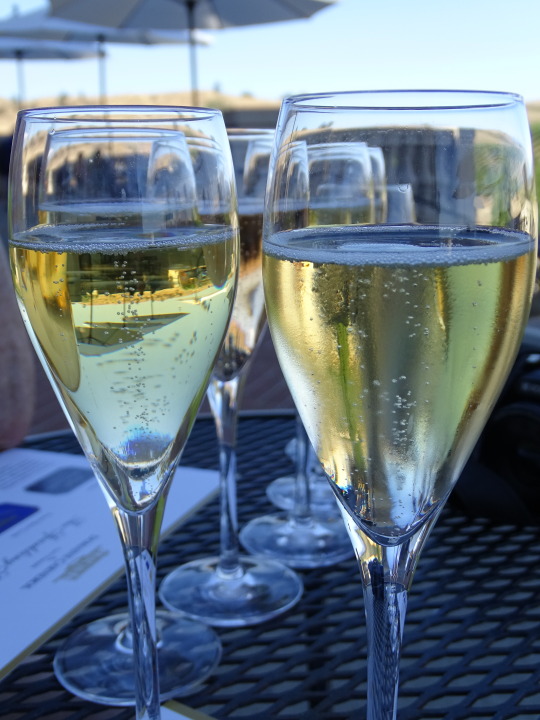

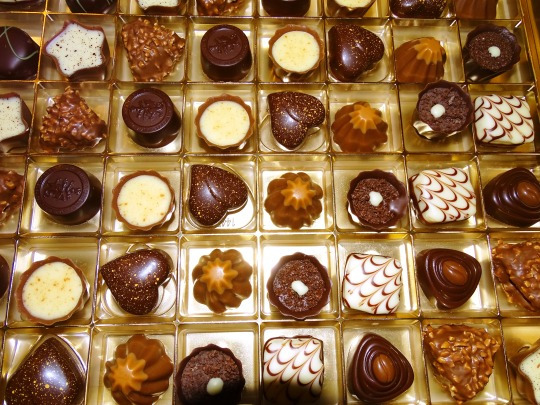














Valentine’s Day
Love and romance. Candy and flowers. Cards and gifts. Dinner and dancing.
Valentine’s Day comes along with a whole host of plans and accoutrements that are meant to all boil down to one thing: Love. And it all comes in the name of one man, St. Valentine, who was an interesting (and perhaps slightly misunderstood) character in history.
It’s time to learn about and celebrate Valentine’s Day!
History of Valentine’s Day
While some people believe that the history of this day is pretty clear, the reality is that the story behind St. Valentine’s Day is covered in a great deal of mystery. Tradition hails February 14 (and perhaps even the whole month of February!) as a time for love and romance, with both ancient Roman and Christian backgrounds.
But when the life of St. Valentine, the patron saint of this day, is considered, that’s when things tend to get a bit more murky. Some people don’t realize that the Catholic church actually has record of three of its own saints who went by the name of Valentine (or Valentinus) and all three died as martyrs.
Valentine’s Day Timeline
270 AD St. Valentine is martyred
Defying anti-marriage instructions given by Emperor Claudius II in order to build up the army, Valentine secretly supports and marries young couples which eventually leads to him being put to death. His death is said to have taken place on February 14.
496 AD First Valentine’s Day is recognized
Pope Gelasius decides to get rid of the Feast of Lupercalia, a pagan festival of love, and chooses to replace it with a celebration in honor of St. Valentine, who was martyred a couple hundred years prior.
1382 Chaucer’s Poem, Parlement of Foules, is written
This poem contains the first known literature reference connecting romantic love with Valentine’s Day. In the text of the poem, Chaucer writes of birds who would pair off with a mate, but some people refute the idea that it is connected to Valentine’s Day because February is too early and cold for birds to be mating.
1700 Americans begin exchanging Valentines
During this century, the inspiration for romance and love on Valentine’s Day turns into the specific gesture of exchanging notes, poems and love letters which may have been delivered by hand or by the US Postal Service.
2010 Valentine’s Day is released in theaters
This romantic comedy has a star-studded cast with big names like Julia Roberts, Bradley Cooper and even Kathy Bates, and tells the story of several different romances between couples that happen all in one day. However, at the box office, the film doesn’t really get the greatest reviews from critics.
Valentine Promotes Marriage
Perhaps the most commonly held tradition around St. Valentine is related to the year 270 AD when Claudius II was the emperor of Rome. Known as “Claudius the Cruel”, the emperor who wanted to build a strong army but was having trouble because of the attachment the men had to their wives and families. His solution? Just ban engagement and marriage, of course!
The story goes that Valentine, a priest in Rome, disagreed with the decree from Claudius and decided to go ahead and perform marriages anyway, allowing young lovers to marry each other in secret. When discovered, Claudius ordered the public beating and beheading of Valentine, which took place on February 14. The church later honored him by naming him as a saint.
This same Valentine is rumored to have become friends with the daughter of his jailer. He is said to have left her a note signed, “From Your Valentine”. This may explain the idea of asking someone “Will You Be My Valentine?”.
Less common are the other two saints also called Valentine, one who was a bishop in what is now Terni, Italy, and another who was martyred in a Roman province of Africa.
Feast of Lupercalia
It’s possible that even before Valentine, the priest, was martyred on February 14, the Feast of Lupercalia, a pagan feast of love, was celebrated around the same time. One tradition that went along with this festival is that the names of women were put into a box and drawn out by the men that they would be matched up with, letting chance (or fate!) take the lead.
By 496 AD, Pope Gelasius was tired of such pagan celebrations, so he declared that the Feast of Lupercalia would be canceled and, instead, St. Valentine’s Day would be celebrated on February 14. As time passed, this day became one where lovers would exchange poems, cards, notes and flowers, singing songs and performing other romantic gestures.
How to Celebrate Valentine’s Day
Celebrating Valentine’s Day comes with all sorts of inherited romantic traditions which can certainly be fun and bring lots of joy! But this is also a great way to get creative with showing people how much they are loved–even if it isn’t a romantic relationship.
Try out some of these ideas for celebrating Valentine’s Day:
Make a Card or Gift for Someone
Whether it’s a romantic partner or just a friend, Valentine’s Day is a great day to say “I Love You”. Hand made cards and gifts are especially welcome when it comes to showing someone how much they are cared for. January is a dark and quiet month anyway, so there’s plenty of time to prepare homemade gifts from a hobby like knitting a scarf, braiding a friendship bracelet, embroidering a towel, painting a picture or simply making a card.
Send Roses for Valentine’s Day
With delivery services abounding in almost every town, getting flowers delivered has never been easier! Choose to send red roses that stand for passion; yellow for friendship; pink for sweetness; peach for sincerity or gratefulness; white for purity or loyalty; ivory for perfection; and lavender for a crush (or love at first sight!).
Make Dinner Reservations
It’s likely that a last minute idea for going out to dinner will result in ordering takeout to eat at home, because restaurants are basically always full on Valentine’s Day. But, think ahead (sometimes months ahead, depending on the popularity of the restaurant) and make a reservation for two at a romantic place.
Enjoy a Story About Love
Head over to a local bookstore or library and browse the selection of novels or biographies that might feature stories about love. Or, it might even be interesting to read a biography about the guys named Valentine!
Those who don’t have as much time to read could put on their favorite drama or rom-com movie and see what hijinx the main characters get into. Try out some of these films about love to get started:
Valentine’s Day (2010). Okay, maybe this one is obvious. And perhaps it’s not even a great film, but it would be remiss to leave out this one with an all-star cast including Julia Roberts, Bradley Cooper, Jennifer Garner and Ashton Kutcher.
The Notebook (2004). This quintessential romance by Nicholas Sparks can be read as a novel or watched in the film starring Ryan Gosling and Rachel McAdams.
Pride and Prejudice (2005). This delightful take on the Jane Austen’s novel of the same name stars Keira Knightly, Rosamund Pike and Matthew Macfayden.
Think Like a Man (2012). Based on Steve Harvey’s book Act Like a Lady, Think Like a Man, this rom-com features Michael Ealy, Regina Hall, Kevin Hart and Meagan Good.
Get Creative for Valentine’s Day
This day doesn’t have to be the same as it’s always been. In fact, it’s a great day to try something new. Go on a mountain hike, visit a museum together, go whitewater rafting or learn how to play chess. Whatever would be fun and can be done in the spirit of love is the perfect activity for this day!
Valentine’s Day FAQs
When is Valentine’s Day?
Valentine’s Day takes place every year on February 14. It started on this day in AD 496 when the pope established the holiday in Rome in honor of the martyred Saint Valentine, who was killed on February 14.
What to do on Valentine’s Day?
This day can be filled with opportunities to show people how much they are loved. Exchange cards, send someone flowers, make breakfast for family members or write a poem.
When was the first Valentine’s Day?
Valentine’s Day is not actually a modern holiday, but has been celebrated in the middle of the month of February for more than 1500 years. The first Valentine’s Day was established by Pope Gelasius.
Is Valentine’s Day a global holiday?
Yes! Valentine’s Day is celebrated in various capacities in countries all over the world. From sharing a bottle of wine to giving gifts, from school children in America exchanging Valentines cards to people in Wales exchanging carved wooden spoons, this day is one that shows how people simply love the idea of love.
Who was Saint Valentine?
There is a bit of overlap in the stories as it seems there were at least three martyred saints with the name Valentine. However, the one most notably celebrated was a priest in Rome who defied the emperor’s anti-love commands and married young couples anyway.
Source
#Heartfullness Vegas by Katy Boynton#Las Vegas#Discriminação Racial by Carlos De Oliveira Correia#Portugal#original photography#Take Heart by Patricia Vader#Napa#New York City#14 February#Eduardo Kobra’s V-J Day in Times Square by Alfred Eisenstaed Mural#Unconditional Surrender by Seward Johnson#Valentine’s Day#ValentinesDay#Canada#Toronto#Vancouver#Sprüngli Pralines#chocolate#travel#vacation#USA#tourist attraction#cityscape#landmark#architecture
2 notes
·
View notes
Text
Got bored, looked up Valentine's Day origins
thesere all from just a basic google search but
"It originated as a Christian feast day honoring a martyr named Valentine and through later folk traditions, it has also become a significant cultural, religious and commercial celebration of romance and love in many regions of the world."
"Turns out, it was a pretty common name during Late Antiquity. As far as anyone can tell, the Saint Valentine of Valentine's Day was one of two guys preaching the good word in Rome in the third century. One of these two was martyred on February 14th 269, thus giving us the date for his eponymous day."
"Emperor Claudius II executed two men — both named Valentine — on Feb. 14 of different years in the third century. Their martyrdom was honored by the Catholic Church with the celebration of St. Valentine's Day."
"Valentine's Day is said to have been celebrated in AD 496 by Pope Gelasius I in honor of the Christian martyr, Saint Valentine of Rome, who died in AD 269 on that date. Saint Valentine was a famous 3rd Century Roman Saint who was Commemorated in Christianity on February 14."
so basically a guy or two got killed
I'll look more into the actual history & celebration later but that's a start
3 notes
·
View notes
Text

Lupercalia was an ancient Roman festival celebrated annually on February 15th. It was a fertility festival dedicated to Lupercus, the god of shepherds, and Faunus, the Roman equivalent of the Greek god Pan. The festival was believed to purify the city and promote health and fertility. Lupercalia rituals were performed by a group of priests known as the Luperci, who would gather at the sacred cave of Lupercal on the Palatine Hill. They would sacrifice goats and dogs, whose hides were then used to make whips or lashes called "februa."
One of the most well-known customs of Lupercalia involved the Luperci running through the streets of Rome, striking people with their februa. It was believed that being touched by the februa would bring fertility and ward off evil spirits. The festival also included matchmaking and fertility rites, with young men drawing the names of young women in a lottery to be their partners for the duration of the festival or even longer. While Lupercalia was celebrated for centuries, it eventually fell out of favor with the rise of Christianity, and in 496 AD, Pope Gelasius I replaced Lupercalia with the Christian feast of St. Valentine's Day, which is celebrated on February 14th.
4 notes
·
View notes
Text
Quote/s of the Day – 21 November – St Pope Gelasius I
Quote/s of the Day – 21 November – The Memorial of St Pope Gelasius I (Died 496) Bishop of Rome from 1 March 492 until his death on 19 November 496. “There are two powers, by which chiefly,this world is ruled – the Sacred authorityof the Priesthood and the authority of Kings.And of these, the authority of the Priests is,so much the weightier, as they must render,before the tribunal of God, an…

View On WordPress
2 notes
·
View notes
Text
Genoa Cathedral or Metropolitan Cathedral of Saint Lawrence (Italian: Duomo di Genova, Cattedrale di San Lorenzo) is a Roman Catholic cathedral in the Italian city of Genoa. It is dedicated to Saint Lawrence (San Lorenzo), and is the seat of the Archbishop of Genoa. The cathedral was consecrated by Pope Gelasius II in 1118 and was built between the twelfth century and the fourteenth century as fundamentally a medieval building. wikipedia

I travel not to go anywhere, but to go. I travel for travel's sake. The great affair is to move.
-- Robert Louis Stevenson
(Genova, Italy)
267 notes
·
View notes
Text
The History and Celebration of Valentine's Day
Title: The History and Celebration of Valentine's Day
Valentine’s Day, celebrated on February 14, is widely recognized as a day of love and affection. Couples exchange heartfelt gifts, friends share warm wishes, and the world is painted in shades of red and pink. But have you ever wondered about the origins of this romantic holiday? Let’s take a journey through the history of Valentine’s Day and explore how it has evolved into the celebration we know today.
The Origins of Valentine's Day
Valentine’s Day traces its roots back to ancient Rome. It is believed to have originated from the feast of Lupercalia, a pagan festival celebrated in mid-February. This fertility festival was dedicated to Faunus, the Roman god of agriculture, and involved rituals to promote health, fertility, and matchmaking among young couples.
However, the association with romance is linked to Saint Valentine, a Christian martyr. The exact identity of Saint Valentine remains uncertain, as multiple saints with this name were venerated by the early church. One of the most famous legends suggests that Valentine was a priest in Rome during the reign of Emperor Claudius II. The emperor had outlawed marriages for young men, believing that single men made better soldiers. Valentine, defying the decree, continued to perform secret weddings. When his actions were discovered, he was imprisoned and later executed on February 14 around 269 AD. Before his execution, it is said that he sent a farewell letter to his jailer's daughter, signing it “From your Valentine.”
In 496 AD, Pope Gelasius I declared February 14 as St. Valentine’s Day, aiming to replace Lupercalia with a Christian feast that honored love and devotion.
The Evolution of Valentine's Day Traditions
Over the centuries, Valentine’s Day evolved into a day dedicated to love and romance. By the Middle Ages, the idea of courtly love gained popularity in Europe. Geoffrey Chaucer, the English poet, played a significant role in romanticizing the holiday. In his 14th-century poem “Parliament of Fowls,” he mentioned February 14 as a day when birds choose their mates, further associating it with love and companionship.
By the 18th and 19th centuries, exchanging handwritten love notes became a common practice. With the invention of the printing press, mass-produced Valentine's cards became widely available. The 19th century saw the rise of commercial Valentine’s Day cards, thanks to companies like Hallmark, which further popularized the tradition of expressing love through gifts and greetings.
Modern-Day Valentine's Day Celebrations
Today, Valentine’s Day is celebrated worldwide, transcending cultural and geographical boundaries. Common traditions include:
Exchanging Cards and Letters: Millions of Valentine’s Day cards are exchanged every year, making it one of the most card-sending holidays.
Gifting Flowers and Chocolates: Red roses, symbolizing love and passion, and chocolates, representing sweetness, are among the most popular gifts.
Romantic Dinners: Couples celebrate with special meals, whether at home or in fine restaurants.
Marriage Proposals: Many choose this day to propose, making it a significant occasion for engagements.
Celebrations Among Friends and Family: In addition to romantic partners, friends and family also partake in the festivities, exchanging small tokens of affection.
Conclusion
Valentine’s Day has come a long way from its historical origins, transforming into a global celebration of love, romance, and appreciation. Whether you spend the day with your significant other, friends, or family, the essence of Valentine’s Day remains the same – to spread love and joy.
So, how do you plan to celebrate this Valentine’s Day? Share your thoughts in the comments below!


#Valentines Day#history#celebration#love#romance#Saint Valentine#Lupercalia#traditions#gifts#chocolates#flowers#romantic dinner#proposals#greeting cards#courtly love#medieval#Hallmark#February 14#Christian martyr#ancient Rome#poetry#Geoffrey Chaucer#modern celebrations
1 note
·
View note